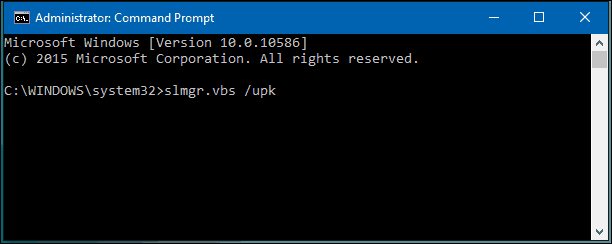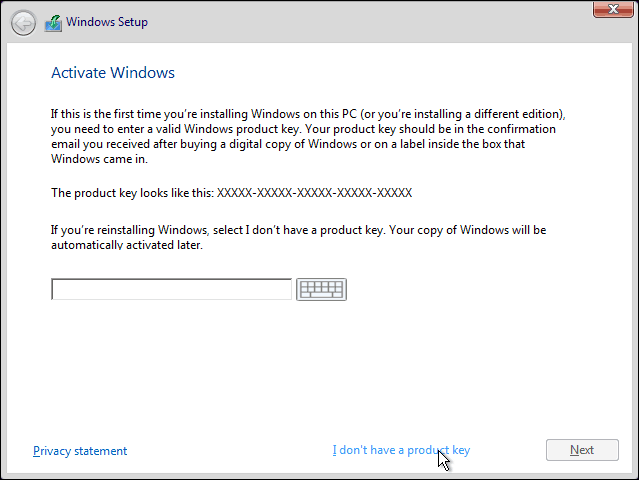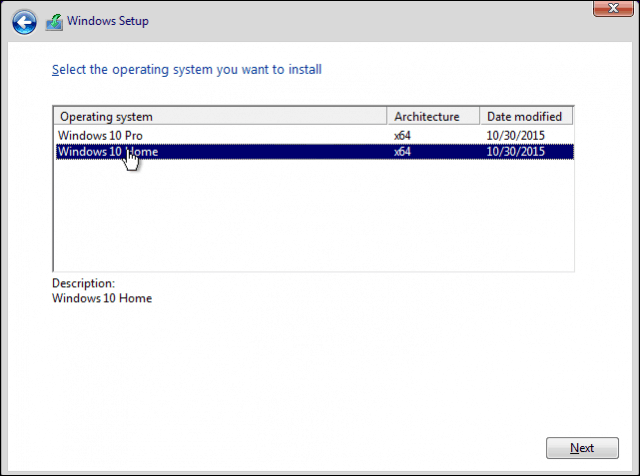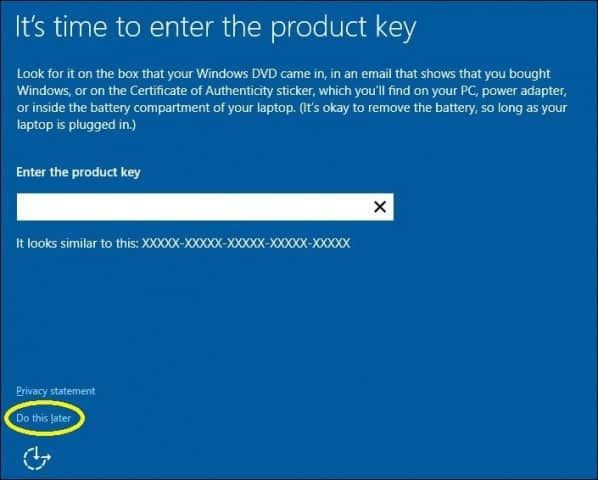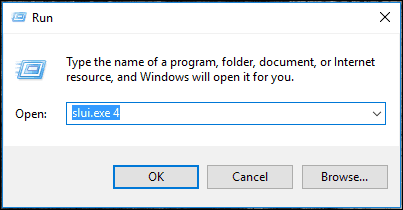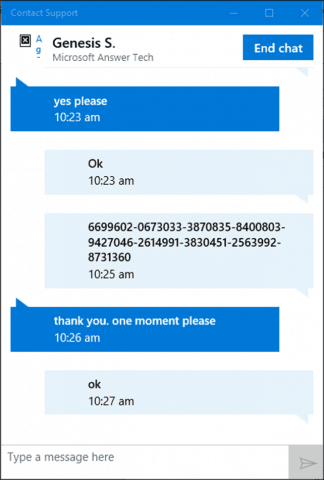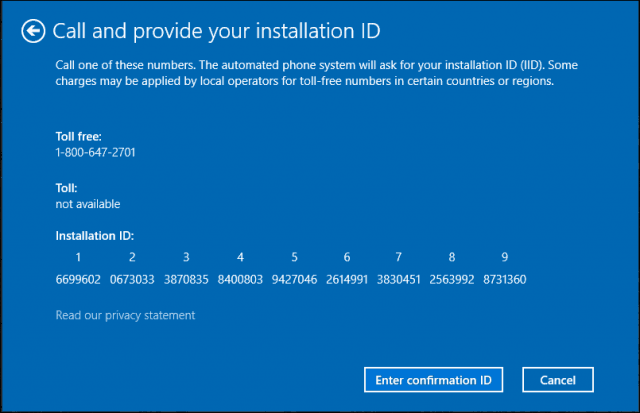In 2015, Microsoft launched its latest version, Windows 10, offering the operating system to qualifying PCs and devices running Windows 7 or Windows 8 for free, for a limited time. Microsoft continues to provide Windows 10 as a full retail product for computers without a qualifying license or for people who build PCs.
Determine If Your Windows 10 License Can Be Transferred
Find out what type of license you have installed
Microsoft describes the Windows 10 free upgrade as a full version, not a trial. Contrary to these statements, Windows 10 free upgrade does have some restrictions.
If you upgraded from a retail copy of Windows 7, Windows 8, or 8.1, the Windows 10 license carries the retail rights from which it was derived – can be transferred. But under Microsoft’s rules, you are only entitled to a one-time transfer.From an OEM Windows 7, Windows 8, or 8.1 licenses upgrade, these are licenses that come preinstalled on a new computer from a manufacturer, and then your Windows 10 license maintains the OEM rights – cannot be transferred.If you have a full retail copy of Windows 10, you can transfer it as many times as you want.If you performed an Easy Upgrade to the Windows 10 Pro Pack from Windows 10 Home, you could transfer it using Digital Licensing. This is possible because the Pro Pack, while an upgrade, is a retail license attached to the Microsoft Account used to purchase it.
Releases or “Versions” Matter
We discussed these nuances in our Windows 10 editions article; with the release of Windows 10 November Update, 1511, Microsoft made modifications to the channel license. Previously, you could identify the channel from which, the license was derived by issuing a particular Windows command. The November Update now describes all licenses upgraded, whether full package or OEM, as retail. Even though your free upgrade to Windows 10 from an OEM Windows 7 or Windows 8/8.1 is now identified as retail, in spirit, it is still an OEM license. This affects the rights to what you can do with the license. If it’s retail, you can continue to make hardware modifications to your system, such as changing the motherboard or moving it to a different computer. For an OEM version, if you change the motherboard, automatically, your free upgrade will be invalidated, meaning, you will have to purchase a new full retail Windows 10 license. With the release of the Windows 10 Anniversary Update, Microsoft has made further improvements to transferring your license using the Digital License feature. This is one option users should look into first when transferring a license, check out our article for details about how it works.
Remove the License, then Transfer it to Another Computer
To move a full Windows 10 license or the free upgrade from a retail version of Windows 7 or 8.1, the license can no longer be in active use on a PC. Windows 10 does not have a deactivation option. Instead, you have two choices:
Uninstall the product key – this is the closest to deactivating the Windows License. This method does not inform Microsoft Activation Servers the license is no longer in use on the machine; instead, it will avoid conflicts down the road if Microsoft Activation Servers were to detect the license in use on more than one system.Format the computer – this method ensures the license is no longer in use on the computer. You can use the convenient Reset option in Windows 10 to do this.
Uninstall Product Key
Press Windows key + X then click Command Prompt (Admin). At the command prompt, enter the following command: slmgr.vbs /upk. This command uninstalls the product key, which frees the license for use elsewhere.
You are now free to transfer your license to another computer. Since the release of the November Update, Microsoft has made it more convenient to activate Windows 10, using just your Windows 8 or Windows 7 product key. When prompted during setup for a product key, click I don’t have a product key. If you have a full version Windows 10 license bought at a store, you can enter the product key.
Select the Edition You’re Licensed For
The Windows 7 Starter version, Home Basic, Home Premium, Windows 8.1 Core: Windows 10 Home Or, Windows 7 Professional, Ultimate, Windows 8.1 Pro: Windows 10 Pro
Windows 10 setup will prompt you again for a product key during the Out of Box Experience, click Do this later if you are using a Windows 7 or Windows 8/8.1 product key. If you have a full version Windows 10 license bought at a store, you can enter the product key.
How to Reactivate the License
Once you arrive at the desktop, you will need to re-enter your product key. You can do this a couple of different ways. Let’s try the easiest method first. Click Start > Settings > Update & security > Activation > Change the product key. Enter your Windows 7 or Windows 8.0/8.1 product key, then click Next to activate. The other option is to enter the key from the command prompt. Press Windows key + X then click Command Prompt (Admin). Use this option only if you are experiencing difficulty doing so from within Settings. At the command prompt, enter the following command: slmgr.vbs /ipk xxxxx- xxxxx- xxxxx- xxxxx- xxxxx. Hit Enter on your keyboard; you will receive a confirmation the product key was updated. Close the command prompt then proceed to reactivate by telephone or Contact Support.
Contact Support if Needed
Because the Windows 10 license was previously in use on another computer, you will need to reactivate by telephone or use Contact Support. Press Windows key + R then type: slui.exe 4 then hit Enter on your keyboard. Note: If the slui.exe 4 command does not work, type slui instead, then hit Enter.
The activation wizard will launch. Choose your country and click Next.
Call the number on the Activation screen or launch Contact Support, then explain your situation to the Microsoft Answer Tech; provide the Installation ID on the screen.
The agent will verify your product key, then provide a confirmation ID for reactivating Windows 10. Review our article for complete instructions on how to get your license reactivated.
If you purchased a Windows 10 Pro Pack, you will need to sign in to your Microsoft account in order to reactivate using Digital License. A very exhausting procedure, I know, but it works smoothly, especially with the new chat support option in Windows 10. Up through at least Win XP, an OEM version of Windows could be reinstalled and activated on ANY machine from the same vendor (Dell, HP, etc) regardless of what OS was originally installed on that machine. For example, a Dell OEM version of Win XP could be installed on a Dell system which originally came with Win 2000 (or even Win 7). The new XP installation would activate and be completely legal. Beginning with at least Win 7 (I never worked with Vista, so can’t speak to that OS), an OEM version could still be installed and activated on any machine from the same vendor ONLY IF said machine came with Win 7 in the first place. For example, if you install an OEM version of Win 7 on a machine by the same vendor which originally came with Win XP it won’t work. Actually, the installation itself works, but it will never activate. Instead, you’ll get the MS message telling you it’s not a genuine copy. I’ve done all the above many times at work and on my own machines at home, so I know this is accurate. – Can I install W10 on my new Inspiron using the W10 product key from my XPS 8900? What you could try however to upgrade your DELL Inspiron is try and get a free upgrade from Microsoft. Although Microsoft ended I’ve used the accessibility process to upgrade existing boxes. More details on that here: https://windows10.help/blogs/entry/6-windows-10-free-upgrade-apparently-still-available/ Andre wrote that up. There are methods used to lock out the ability to re-use software. They become more advanced as time moves on. It all depends on what type of person you are whether or not certain installations will work and how you define those words. For instance, if your neighbor left a car parked with the door unlocked and the keys inside, you could open the door and turn the key and drive away. That is basically the discussion you are having here. Here are the rules for Microsoft software regardless of whether or not you are a proficient thief. Microsoft has always created a RETAIL VERSION OF MOST OPERATING SYSTEM SOFTWARE. That version is owned by the purchaser to the extent that it can be legally installed on a computer then removed from that computer and installed on a different computer. As long as the SINGLE LICENSE is never used in 2 places simultaneously then you are abiding by the agreement and not subject to criminal prosecution or civil suit. That is the deal. They paid to create it and market it and decided that for X dollars you could use it on any computer that would run it and MOVE it to a different computer. OEM is a different deal. They created a way to reduce the purchase of a new computer. Instead of $300 for a license to the OS, the OEM version can be had by various levels of builders for a wide range of prices which should be reflected in the total cost of the computer. Also, there are ways that certain versions of OEM software can be purchased and used if you follow the rules. Going into the deal, the buyer should be aware of the fact that ONE REASON THE PRICE IS LOWER is that the buyer has decided not to pay a premium for the license that allows installation onto a different computer. The OEM LICENSE LIVES AND DIES WITH A SINGLE COMPUTER and can never legally be installed onto a different computer. The OEM media can be used to install onto another computer that has an OEM license that matches the one required to activate that OEM version. It is perfectly legal to install Microsoft software onto any computer at any time. IT IS ONLY LEGAL TO ACTIVATE THAT SOFTWARE ON THE COMPUTER FOR WHICH AN APPROPRIATE LICENSE EXISTS. Recovery images can be a bit different than any of the above and it will depend on the particular media/vendor/license whether or not you can do anything other than recover the exact computer that it came with. The RECOVERY MEDIA description has been used for over 15 years now so the definition has changed over time. Basically you have to understand that no matter how you might feel about the price someone charges for a product that you are a criminal if you do not abide by the agreement. Just like you can steal your neighbor’s car if the keys are there and if you were to go someplace where you could not be found or changed the identification on the car you might live your whole life with that stolen car, it would never be your car and you are a thief regardless of if you get caught. The information there is pretty close to english. As I said, you cannot transfer an OEM license to a different computer. When you say to enter the ‘product key’ into the command prompt (after having installed W10 on the new hardware), is this the same key as I originally used for W8.1? Is there a provision to do it. Also, why my MS Office and all that I had purchased and reinstalled in this machine has not been added to my account. They were not purchased from the account but through another service provider. Appears account information captured is not constant and wastes lot of our time. As I am going to donate the old PC to a charitable outfit, I will reformat the HD, so that the existing O/S will not be included in that donation. And, as I don’t want to spend $200 to upgrade my Asus to Win 10 Pro, I want to transfer the Win 10 Pro O/S from the old PC to the Asus, and overwrite the Home version. But, I believe that I have two problems. One, how do I do such a transfer, and two, how can I change that Win 10 Pro O/S from 32-bit to 64-bit? All suggestions will be more than welcome. . Upgrade to Windows 10 Pro using the following default product key: VK7JG-NPHTM-C97JM-9MPGT-3V66T Review instructions how to perform an Easy Upgrade using the default key: https://www.groovypost.com/howto/upgrade-windows-10-using-easy-upgrade-feature/ After upgrading, proceed to enter the Windows 7 Professional, Ultimate or Windows 8 Pro product key. Click Start > Settings > Update & security > Activation > Change the product key Enter the product key, close then restart your computer, it should reactivate automatically. If you have problems activating, contact support: https://www.groovypost.com/howto/activate-windows-10-license-microsoft-support/ This Win10 Pro product key can be use as real time pc upgrade to Win10 Pro, from any Version of Windows? Thanks/Regards. Elvis. You are now free to transfer your license to another computer. Since the release of the November Update, Microsoft made it more convenient to activate Windows 10, using just your Windows 8 or Windows 7 product key. My response to the above: OK, I get the free to transfer part but the “how to” is quite vague. Moreover, Microsoft states one must be on the latest Windows 8.1 version (which is 8.1.1 or 8.1 update) to get the free upgrade. So, can you confirm the base Windows 8.0 retail key is all that is needed? Or would I need a Windows 8.1.1 key and will the procedure work “only” if I had upgraded to Win 8.1.1 before the end date to do so? My response to the below statement: OK, you go right into the setup. I assume this is a clean install of Windows 10 using the W10 ISO (or USB installer). In summary, are you implying one can transfer a license via a clean W10 install to a new computer “without” having to do a reinstall of the original retail OS? And, since my original retail OS was Win 8.0 (not 8.1.1) are you confirming that will work as described? Thank you. When prompted during setup for a product key, click I don’t have a product key. If you have a full version Windows 10 license bought at a store, you can enter the product key. Prior to the November Update, the initial public release from July 2015 (build 10240) required that you have the qualifying Windows version (Windows 7 or Windows 8/8.1) installed. That is no longer the case with the November Update. Please note, this works from a clean install stand point, but if you want to transfer the license to a running computer running an existing version of Windows that is not activated, you will have to run the classic installer. Browse the Windows 10 install media, open the Sources folder then double Setup.exe. Signed, Enterprise Linux admin. Thank you for your quick response and clarification. Now, I have one final concern about your statement regarding the November 2016 (or 2015?) release changes. Specifically, I just used the latest W10 media creation tool to download and create a USB installation disc; however, when I look at the digital signature, the date is October 29th, 2015, which means it it still a very early release. Now, can this edition be used as you described or does one need an installer version that was released after November 2016 (or 2015)? Thank you again. This has always been the case with versions of Windows. Windows 7 was released to manufacturing in July 2009, but did not reach shelves until October 2009. Windows Vista went RTM November 15th 2006, but did reach shelves until January 31st 2007. I think you have effectively answered all of my concerns. Now, I will build my new PC and give it a try. However, if anything goes wrong, I’ll just grind through a reinstall of 8.1 update, upgrade to 10, and then clean install 10 again. I just hope MS lets me do tjis or I’ll be stuck on 8.1 update (which is really not a bad thing IMHO). Anyway, I’ll report abck within the next week and let everyone know how I made out. BTW, I can’t believe I really said November of 2016! I’m gonna blame that on my wife… Cheers and thank you! gus -I’m in the process of building a new PC -I want to use my step dads free upgrade to windows 10 that he has yet to activate on his laptop -I went through the process of putting the Windows 10 download onto a USB stick -After the process was done, the menu said I would need to activate Windows 10 via a product key if I wanted to install it on my clean build So my question is, is it possible for me to use my step dad’s product key on his laptop to activate windows 10 on my clean build? if so will it mess up windows on his laptop? if i can’t do either, is there a way to get a key for free? are there any options i’m missing? Cheers The free upgrade for your dad’s PC is tied to it. The Windows 10 free upgrade only works on computers running a previous qualifying version of Windows, version 7 or 8/8.1. I have purchased a laptop with Windows 10 Home, and I’d like to upgrade to 10 Pro. My previous laptop came with Windows 8 Home, and I purchased a Windows 8 Pro Pack to upgrade it to Pro. I later upgraded that machine to 10 (Pro). Can I deactivate the Pro Pack on the old laptop and use that product key to upgrade my new laptop to 10 Pro using the Pro Pack? I don’t mind wiping the old laptop. Thanks! I have old laptop which I had bought with Windows Vista OS preinstalled. I had upgrade it with Windows 8.0 pro 32-bit (legitimate upgrade license key purchased from Microsoft) and later automatically upgraded to windows 8.1 pro (32-bit). The laptop is getting old now and I am thinking to buy new machine (laptop or assembled PC). Question is, can I install “Windows 10 pro update (64-bit)” (currently being offered free by Microsoft) on the new system using my windows 8.1 pro key? If ‘yes’, how should I proceed correctly, so that I don’t end up in mess. If I am able to build new system successfully, I plan to decommission old laptop or use it with Linux OS or so. So definitely I am not going to use current Windows 8.1 license on that laptop. Appreciate your help. Thank you. Sorry for the late response. The answer is yes. Starting with the Windows 10 November Update, you can now use your Windows 8/8.1 or Windows 7 keys to install and activate Windows 10. First install Windows 10 Pro, then skip entering the product key when prompted. When setup is complete, click Start > Settings > Update & Security > Activation > Change the product key, enter the Windows 8 key to activate. If you have problems with phone activation, contact chat support: https://www.groovypost.com/howto/activate-windows-10-license-microsoft-support/ Two questions… 1. My company has 300 PCs with Windows XP Pro and want to upgrade to Windows 10 Pro. Do you recommend we purchase MPSA Windows 10 Upgrade Volume Licenses for 500 devices (with 200 licenses for growth)? We are hoping to use the Volume licensing as a better way for the deployment and maintenance of these computers. Are we correct in this assumption? 2. We are in the process of purchasing 200 brand new PCs. Can use the spare 200 Volume Licenses to directly install Windows 10 on them without having to purchase these PCs with an OS? Getting the new PCs without an OS cuts down the price significantly and since we would have spare Volume Licenses, shouldn’t Microsoft allow us to use these licenses on new systems? Thank you. Please note that Volume License Windows is actually an upgrade, which means, the computer must properly licensed with qualifying license. I believe Windows XP Professional under Volume license is still qualifying. It should always be a premium business SKU in the Pro or Ultimate family depending on the version of Windows you currently have deployed. As I noted, Windows under volume license is not a full license. So you cannot a spare key to perform a new installation. You would need a GGOK which is a full version volume license which permits clean install: http://windows.microsoft.com/en-us/windows/genuine/business I would also recommend you check the Volume License Advisor page: http://mla.microsoft.com/ If you are unable to find it using Show Key Plus, then you likely will need to purchase a new license unfortunately. I think what you are looking for is the Recovery Drive method. The recovery drive includes the key of the device it is created in. According to MS, if you were to try and extract the key in Windows 10, you will not get the actual key, but a dummy key. As far as activation goes, you may still have to call MS to reactivate, but the information they need regarding the key should get transferred using the recovery drive method: http://answers.microsoft.com/en-us/windows/wiki/windows_10/how-to-create-a-recovery-drive-for-reinstalling/58df9c7d-84de-4652-9952-8bac34abc6c5 Windows key + R Type: slui.exe 4 Hit Enter I have already used my retail Windows 8 to 10 free upgrade. I am looking to build a new computer later on this year (Septermber-ish) and wanted to know what the process is to transfer my license across as it will most likely be after the upgrade offer ends (29th July 2016). Do I follow the above instructions as my retail key is already associated with a Windows 10 upgrade? Or does my license transfer only apply before the offer ends? I’m assuming I can do it whenever I like as I have already associated my key with Windows 10, but wanted to be sure. I have Windows 7 Pro (Technet/Bizspark/MSDN version) running on my computer right now. I am going to buy a new PC with all new hardware in July, however I may have to wait until August, which is after the July 29 Windows 10 upgrade deadline. Would I be able to upgrade my Windows 7 to 10 on this current machine (to reserve my license), then, install Windows 10 on the new PC and use my Windows 7 serial key and transfer the Windows 10 license over to this new PC? Thanks! I have several Windows 7 Pro licenses but only one is installed and running. I want to upgrade those keys to Windows 10 for future use. As I know that the free upgrade program will expire after July. Can I install multiple Windows 7 Pro on the same PC or on the VM and upgrade them to Windows 10. After July I transfer those licenses to the new machines? Thanks. Telephone activation failed and so I moved onto chat. 40 minutes later they entered and activated a new OEM key. So my retail Win 8 Pro is now a device locked OEM Windows 10 Pro. The free upgrade is not a full licence it is only good for the lifetime of the device. kind regards alan culshaw. What I was gonna do was, Take the toolkit on the Microsoft site and load it on a USB. Then proceed the Windows 10 install on the new pc. Then I was gonna use my Windows 7 Product Key for the Windows 10. I installed win 10 pro 64-bit on my new pc, but left it unactivated so that I can transfer my old license to the new pc. First I reinstalled win 10 (deleted the hd and installed win 10 on it). Then I tried following the steps here by deactivating the product key on my old pc. Then I tried to add the product key to my new pc, but it said the key is activated or tied to my old pc. I called Microsoft and they tried some things with me, but it didn’t work so they said they’d escalate it and someone else fr Microsoft call me back tomorrow. I didn’t try reactivating the license in command prompt until after the tech support call. Does anyone know what the issue is and how I can successfully transfer the license from my old pc to my new pc? Lets say I have a laptop with an OEM W7, free upgraded to W10. If I uninstall that key, can I replace it with a retail key directly, or will I be required to do a clean install? – My objective is to give my girlfriend a new licence so that we can move it to the new pc I am building for her later on. Can you confirm this? Also, I have a few, un-upgraded keys for W7 that I would like to register before the free time is up, is there anyway to do it? I know all the instillation stuff and know how and where to buy a new Pro key. My question is, will this method work, to deactivate my Home key, so that I can sell it on a forum? Or will it be limited to my account or to me personally, when contacting the support for “reactivation” on the other person’s PC would I need to be involved or would Microsoft “understand”and allow the other person to then use the key? T.I.A My problem is somehow different but still related to Windows OS. I have a Toshiba laptop with Windows 7 Professional OS; which CD was lost. I had accidentally reverted the laptop to its OEM Windows 7 Home Edition. Can it be turned back to Windows 7 Professional? How? Please help….Thanks! I have the product key of the latest windows 10 Pro version (July) which is a retail version. I want to ask that if I want to transfer the license key to d new machine all I need to do is to uninstall the product key and write down d key whenever they demand during installation in the new laptop. Am I right Andre? Will it be activated automatically on my new machine since I have used d key of the latest version of d windows 10? Great article. What about an Education key ? The 2 activations are linked to MS acct. I read a post/reply by you on microsoft.com confirming 2 per Ed key. Wish to deactivate 1 and reactive on another machine. Guessing I would go through the same steps as retail version? I wish you were able to deactivate and reactivate online. like Office 365 for retail versions. I understand why this should not be allowed for OEM versions. If the activation is linked to your MS account, you can remove from your account but this does not deactivate it afaik. Hit Enter It will say OEM in the dialog. or Press Windows key + X Click System Look under Windows Activation, the Product Key will have OEM in it. I wasn’t sure as it was a sort of pre-built from quite awhile ago and i upgraded to win 10 from win 7. Thank you so much for the help Andre! I have a retail copy of Windows 8 Pro that I purchased and had it on my former MacBook through Bootcamp. I took advantage of the Windows 10 upgrade on that machine. I just purchased the new 2016 MacBook Pro. I took the steps of deactivating the Windows on the old Mac, then installed Windows 10 on the new Mac (Note: in Mac Sierra you can not install anything less than Windows 10). I’m at the step where I’m trying to input the activation key but when I type “slmgr.vbs /ipk xxxxx- xxxxx- xxxxx- xxxxx- xxxxx” I get a message saying “The Software Licensing Service reported that the product key is invalid” I bought a HP refurbished laptop with pre installed Windows 10. After a month, it started giving me message “your windows license will expire soon. You need to activate windows in Settings.” While in settings and everywhere, it says windows is activated. I kept ignoring but message kept appearing. It got on my nerves and I reset my laptop and mistakenly formatted the recovery too. Now I have two questions:
- How can I recover my product key? It’s nowhere below the laptop or written anywhere on the box.
- If I am able to find my product key, can I use it (kind of transfer) on another Dell or HP laptop having DOS? Or I can only put it to the refurbished laptop? Could you please let me know is it possible to get product key from the already activated windows 10 system? Are there command line tool (like slmgr.vbs) to see the installed licence? Thanks in advance!!! I have two desktop PCs at home. For the sake of clarity, let’s call them Alpha and Beta. Alpha is my main machine, a certified refurbished ASUS. It originally came with Vista but I wiped it and clean installed Win7 Pro, then did the free upgrade to Win10, then after activation wiped it clean and reinstalled Win10 again from scratch. Beta is my son’s PC I purchased from a company surplus auction. It’s an older Dell that came with either XP or Vista, which I also wiped and clean installed Win7 Pro. Unfortunately Beta couldn’t upgrade to Win10 because of an incompatible or unsupported video card/driver and missed the free upgrade window. I’ve recently acquired a third PC, we’ll call it Gamma. Gamma is a custom built PC that originally had Win7 then did the free upgrade to Win10. Gamma has better specs than Alpha or Beta. I want to make Gamma my new main PC, hand down Alpha to my son and get rid of Beta altogether. The problem is Alpha has a better drive than Gamma (1TB SSD vs 256GB SSD) and I want to swap them without having to wipe or reinstall anything. Is this possible without having to reinstall or purchase a new Win10 license for either PC? I have a new laptop with Win 10 Home on it. My old laptop is a win 7 Pro upgraded to Win 10 Pro via the free upgrade. Can I deactivate the Win 10 license on the old laptop and use that to upgrade the new Win 10 Home laptop to Win 10 Pro? The old laptop would be reloaded with Linux. what can i do now? i have no way to “close” my serial from that old computer because: a) it doesnt turn on anymore (bios problem), b) the ssd i had on it is placed on my new laptop, c) backup flashdrive has formated by accident (expecting it to be the hdd on line command…) sorry for my bad english Steps here: https://windows10.help/blogs/entry/6-windows-10-free-upgrade-apparently-still-available/ In your reply dated 6/1/16 you state: • Right now, rights are prior to July 29th. After July 29th, the license will be attached to the machine permanently. I’m not sure if you were referring to the same thing so any clarification would be appreciated. Thanks. Can I use that cd and key to Install windows 10 on my other laptop ? can I switch it for my next self-built desktop as windows 10 by any means? Is it possible for me to transfer my licence to new laptop ?? Also I have a Windows 7 Home Basic retail copy and a Windows 8 Pro digital license. Will this be of any use to regain my digital license for Win10? Please help. I am devasted now. I wanted to sell my desktop alone, not my WIN10 digital license also. You won’t have any way back on that one without contacting MS. You’ll want to start a service request with the account that used to have the license associated with it. -You can upgrade your RAM or video card with no problems, right? -You can upgrade your cpu (if it fits) with no problems, right? But if you upgrade your motherboard, does that count as a ‘new computer?’ How about if you upgrade your hard drive to say, an SSD, and transfer everything to it? My PC was free-upgraded from a Windows 8 Full/Retail (FPP). I want to upgrade Mobp/CPU/RAM/GPU but have been putting it off due to the cost of re-buying Windows. If I can indeed activate using my original Win 8 key, that would change everything. Great post but I continue with a doubt. A computer bought some years ago with Windows 8 home, upgraded to Windows 10 home (free upgrade from Microsoft), and running now Windows 10 Pro. If I need downgrade again to Windows 10 Home. Did I lose the original licence after upgrade to windows 10 pro, or can I reinstall Windows 10 home and recover the original licence of the laptop? Regards I have an old as dirt Dell Inspiron that came with OEM Windows Vista. I bought a Windows 8 Pro Upgrade Version key online and upgraded to Windows 8, then 8.1. Then received the free update to Windows 10 Home. Looking to purchase a custom PC now. Can the old Dell’s Windows 10 license be transferred to the new PC? I’m assuming that I will be able to transfer the Win10 Pro license to the new computer, which is coming from iBuyPower with Win10 Home. Is this correct? I’m assuming that they are using an OEM version of Win10 Home. My real question is, would the fact that the Pro license was delivered digitally help me avoid a call to tech support, or am I going to have to call in any case? Can I still transfer the same Win8/Win10 product key on a new machine without surrendering from the old machine? That is true. The license has moved a few times. It was on a physical PC, then I virtualized my gaming PC and moved the license to the virtual machine. This week I decided to switch back to a physical PC, and that is when I discovered I could not transfer the digital license. I guess you can only transfer a retail digital license 1 time. Comment Name * Email *
Δ Save my name and email and send me emails as new comments are made to this post.
![]()

